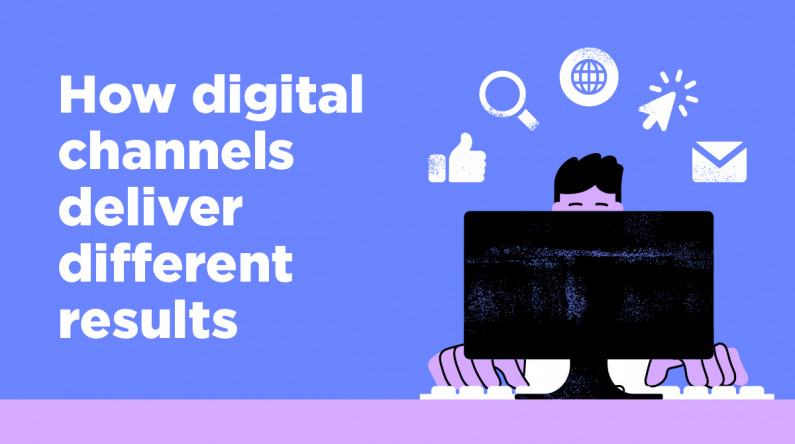Reaching your online audience

With a range of digital channels and approaches, there’s no one way to do digital marketing that will work for every business. It’s about looking at your budget, your target audience, your business goals and your personal strengths, and finding a path that works for you.
Here’s our guide to digital marketing channels – and how to use them:
1: Website – making the most of your own space
There may not be one marketing approach that fits everyone – but a great website is something every business needs. Your website showcases your branding, your tone of voice and your product or service, so it needs to be well-designed and thoughtful. Use consistent design/brand elements, make sure the UI (User Interface) makes sense, and update content frequently to make it engaging for your audience (and Google). People come to your website when they’re already interested in your product or service – don’t lose them at the last second.
2: Social media – real connections with your customers
Social media offer audiences in the billions, instant connections with potential customers and complete control over your content – no wonder marketers are such big fans. Done right, social marketing can help you make real connections with your customers and build an authentic audience for your brand. Of course, success on social is not as simple as it might seem: you need to consider your audiences, choose the right channels, post consistently and get back to people when they contact you.
3: Email – substantial content, great results
Email marketing may seem old-fashioned to some – but it’s stayed around all these years because it delivers. One study found that for every $1 spent on email marketing, businesses received an average of $42 return. Because marketing emails are usually sent to a mailing list that you’ve built over time, you’re targeting customers who have already shown an interest in your business – not just a random selection of people. Once you’ve established your list, you can use email to share in-depth information, nurture customers through a sales journey or simply build trust in your business. It's easy to set up an email capture on your website, so you can start building an email database today!
4: SEO – helping people find you
Search engine optimisation (SEO) works in two ways – organic or unpaid SEO that uses your content to guide searchers to your site, and paid or SEM that involves paying to bump you up the search rankings.
For free, effective SEO, focus on using relevant keywords on your site, particularly in metadata and headlines. Link to other sites where you can, and keep your content fresh – the more you update, the better. SEM can be beneficial because it puts your brand in front of customers – literally. Even if searchers skip past your listing at first, they’ll be more aware of your brand and may return in future.
5: Paid advertising – a targeted approach
Paid online banners and other display ads help you reach a wide audience and target specific customers at the same time. Pay to display an ad on a relevant website (Google Display Ads) to reach a broad audience, and use ‘remarketing’ to target people who have visited your website without making a purchase. Remarketing, sometimes known as retargeting, pinpoints people who may have browsed your site for a specific product or put a product in their online cart, and shows them the ad as they browse around the web. It sounds annoying, but it can be an effective way to convert browsers to buyers.
Need help reaching your customers online? Talk to us now.